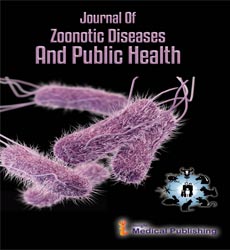Abstract
Livestock-Cattle Welfare and Public Health Implications of Injectable Drug-Administration Malpractices under Livestock-Cattle Farming and Commercial Conditions
Background: Injection drug administration can harm animals and cause increased public-health problems, if improperly administered, and without professional ethics.
Objective: To investigate the unreported and under-reported injection malpractices by the nomadic livestock-cattle farmers and livestock-cattle traders in Nigeria, and associated animal welfare issues, as well as related public health implications.
Methodology: Sources of information were observations and informal oral interviews of the livestock-cattle farmers and traders, who were located at six major livestock-cattle farms and settlements, and six livestock-cattle markets in Southwest Nigeria. Interviewed veterinary doctors and animal husbandmen were also proximal to the same locations, while others quite far were interviewed through telephone conversations. Verbal informed consents were obtained from the respondents, and transcribed information were presented in textural and graphical forms.
Findings: Pastural livestock-cattle farmers and traders in Nigeria commonly inject their cattle unprofessionally. To restrain a cow for injection, its head is titlted sideways after tying a rope with slip knot round its neck, then injection would be administered on or around the hump, followed by hitting the injection site with fist. Injected cow is made recombent on the floor with the head tilted backwards and the tail held between the two tied hind legs, while more pressure is applied on the neck by the rope whenever the cow struggles. About five minutes after injection, the rope around the neck of the injected cow is released. Major reasons for non-professional injections administrations on livestock-cattle include, shortage of veterinary doctors and animal husbands, inaccessibility to animal health professionals, due to nomadic cattle farming, lack of subsidy and non-compensation by governments, in cases of livestock-cattle morbidity and mortality, as well as, the livestock-farmers’ occasional refusal to pay for rendered veterinary services.
Conclusions: This study to our knowledge is the first to highlight the unreported but notable non-professional harmful injection of livestock-cattle, by nomadic livestock-cattle farmers and livestock-cattle traders. Resulting drastic effects of the injection malpractice on livestock-cattle welfare, and zoonotic implications on public health, must be addressed through the suggested adequate interventions and appropriate implementable policies.
Author(s): Adenike AO Ogunshe and Abiodun A Adeola
Abstract | PDF
Share This Article
Google Scholar citation report
Citations : 59
Journal of Zoonotic Diseases and Public Health received 59 citations as per Google Scholar report
Abstracted/Indexed in
- Google Scholar
Open Access Journals
- Aquaculture & Veterinary Science
- Chemistry & Chemical Sciences
- Clinical Sciences
- Engineering
- General Science
- Genetics & Molecular Biology
- Health Care & Nursing
- Immunology & Microbiology
- Materials Science
- Mathematics & Physics
- Medical Sciences
- Neurology & Psychiatry
- Oncology & Cancer Science
- Pharmaceutical Sciences
